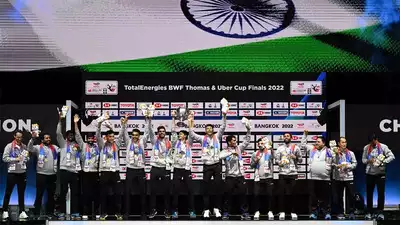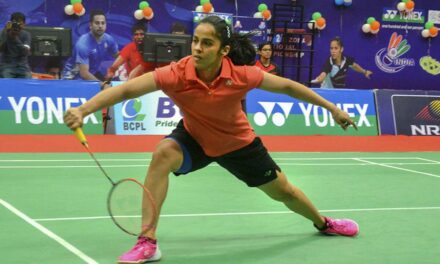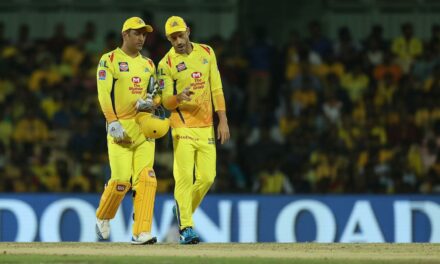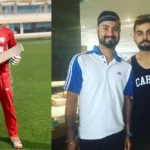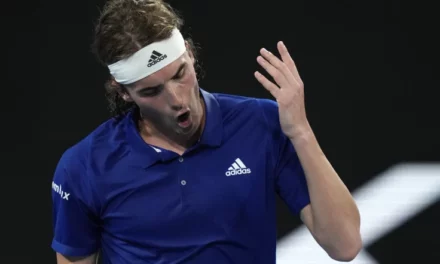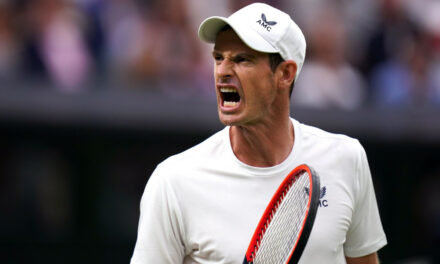
For Indian Cricketer Rohit Sharma, less is more
This has already been discussed in these pages, but it is worth repeating: Rohit Sharma is now the best classic opener in world cricket. This is an absence that is noticeable against the background of the new ball.
That fidgety front foot that would trample across and upset the stillness of his head is gone. With it, the propensity to play even straight deliveries around his front pad disappeared. With it, the LBW threat and unbalanced positions went poof. The technique is almost minimalistic, almost monastic, almost Jacques Kallis-ish. With the natural cadence that elevates him aesthetically beyond Kallis, who was akin to Hollywood’s typical unemotional Russian.
It screams out in Sharma’s remarkably non-fussy defence. Rarely has a ball been anaesthetised so gracefully. The bat is held just above the waist, wrist already cocked gently in place as he awaits, and it gently dips past his hips to meet the ball. Another graceful Indian opener in recent years was Murali Vijay, whose bat would conjure up an elegant movement, a waft. Sharma’s defence seems more compact. In his pomp, Vijay’s judgement of off-stump was impeccable before his feet betrayed him in England in 2018, stirring up the imbalance. An impatient management accentuated his self-doubts and hastened his end before he could course-correct. Luckily, for Sharma, they weren’t as ruthless with him and actively encouraged him to open in Tests.
Something happened to Sharma in the summer of 2019 in the Indian Premier League. Something good. It was initially puzzling as he had started to push deliveries even on middle and leg straighter, towards mid-on. No flicks. No nurdles. No wristy dabs. As if he had scissored out the square region out of his mental map. Time and again through that IPL, he would consciously hold his shape and push to mid-on. It was a glimpse into his intricate batting tweaks that came into play in Tests later.
One can cut out shots like paddle-scoops, laps, late cuts and even the hook, but how does one shelve a shot that’s so instinctive and harmless? It reared its head during the dreamy World Cup in the first couple of games where his aerial flicks just about fell wide of lunging catchers at square-leg. Sharma immediately shut the leg-side shop. It could not have been easy for a free-flowing batsman but he did.
Controlling the feet
Aware of his propensity to lose balance on the front foot, wary of LBWs, Sharma had begun his course correction. A leg-before dismissal had never been far away through his career. Not only against left-arm pacers who could bend the ball in, but also against right-arm seamers who could nip it both ways. So, the front foot opened up a touch more, so did the front shoulder a touch; it acted as a natural inhibitor, a leash to control the wandering front foot. No longer was it stepping too far across, no longer was it forcing him to play straight balls too square.
It also fortified Sharma’s outside-off play. It might be a distant memory these days, but in his earlier years, he used to get squared up to deliveries that straightened outside off. Not as much as Ramnaresh Sarwan but enough to allow the seamers to trouble him occasionally. It happened as he would arrest that front foot movement, try to stabilise by withdrawing it back a touch, but that would open up his right shoulder. It would make his hands jar out, push out in search of the ball, away from his body. One would wait for the replays to see if it was some vicious leg-cutter, but it would turn out to be a ball that just about dinked away, if anything. Just the muscular twitch was understandable to an extent – his Mumbai Indians coach Mahela Jayawardene used to limply hang his bat out in his younger days but Sharma’s squaring up was worrisome. But all that disappeared in recent years. With his mind in better control or as Sharma calls it in a “happy space”, the body has turned into a wilful partner.
One of the traits that convinced his mentor, the late Vasoo Paranjpe that a young Sharma could play at the highest level was the stillness of the head. “Extremely steady,” as Paranjape observed in the book Cricket Drona. “I would exhort him to concentrate harder, to watch the ball more closely, especially after it pitches. He was a carefree lad, and I knew I had to give him some direction. I thought the best way of doing that was to try and get him to concentrate harder — to make him realise that batting is not only about hitting boundaries and looking pretty, but also about having to put your head down and being very disciplined when the situation, the pitch or the bowling demanded it … under his carefree exterior, he had a streetfighter element in him, which added a whole new dimension to his game.”
Thinking on the job
The inherent languidness also hides other minute tweaks. In the recent Trent Bridge Test, Sharma was on middle-stump guard against Ollie Robinson, who repeatedly got the ball to nip in. At Lord’s, Sharma moved to a leg-stump guard for Robinson, but not for Anderson. Occasionally, he would stand outside the crease. At times, even move down it.
Paranjape also points out another crucial factor. “I often spoke to him at length about game situations and about how he needs to think like a captain when he bats — a mindset that automatically brings more discipline into one’s game.” It’s no surprise then that Sharma’s batting kicked on to another level ever since he began to grow into his role as IPL captain.
A sense of stillness has descended on him at the crease. This is where the Kallis comparison pops up. Not many had stripped batting of its accoutrements as Kallis did – anything that was excess to the core of a shot was shed. A sense of clinical cleanness remained in his precise foot movement, bat-flow, and in the steady unperturbed gaze. Not many sponged out the venom from a devious Zaheer Khan in-swinger like him, making it seem like a straight ball that hadn’t misbehaved in the air. He almost denied the moment of its potential romantic battle that perhaps left some a touch cold. Sharma isn’t quite there yet, but then Kallis didn’t have to reinvent himself as an opener. Considering the enormity of the context, this has been one sweet ride.
Sharma the opener is a job description even his most ardent fans and former players couldn’t get themselves to say for years. They wished he would fulfil his potential to become a great middle-order batsman. Even he was hesitant until a persistent Ravi Shastri came along. Once the seed was sown though, it kept twitching and growing in his mind before it blossomed into something beautiful. The only thing missing now are the big hundreds overseas but it seems a matter of time. More when than if.

